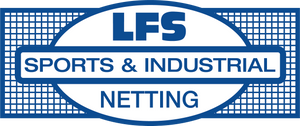Frequently Asked Questions
1. How do I determine the right height for my sports netting?
The ideal height depends on various factors such as your budget, aesthetic preferences, and liability concerns. We offer ball trajectory studies and share insights from similar projects to help you make an informed decision.
2. Can you provide an estimate for my netting project?
Absolutely! Each project is unique, so we provide custom quotes free of charge. Contact us with your specifications, and we'll get back to you promptly. For more information, you can check out this cost breakdown.
3. How long does LFS sports netting last?
Our high-quality netting offers at least 10 years of service, while the overall netting infrastructure can last between 30 to 40 years. The lifespan can vary based on factors like weather conditions and maintenance.
4. Is LFS netting durable enough for extreme weather?
Yes, our netting is robustly designed to withstand UV breakdown and wind loading, ensuring longevity even in harsh weather.
5. What type of poles should I use for my netting system?
The choice between wood, steel, and concrete poles depends on cost considerations and specific project requirements. We're happy to guide you through this decision.
6. What hardware and cable do you recommend for the best performance and aesthetics?
We suggest using utility-grade pole line hardware and cable for superior performance and aesthetics when suspending net panels.
7. What safety features are incorporated into my LFS sports netting design?
Safety is paramount to us. Our sports netting is designed to prevent balls from leaving the play area, ensuring the safety of players and spectators alike.
8. How do I maintain my LFS sports netting system?
Regular inspections for wear and tear, appropriate cleaning practices, and immediate repairs when needed can extend your netting system's lifespan.
9. What's your shipping and return policy?
We offer free shipping on all website orders. For returns, please refer to our refund policy.
10. Can I request a custom netting system?
Certainly! We specialize in customizing netting systems to meet your unique requirements. Contact our sales team for assistance.
11. Do you provide installation guides for your netting systems?
Yes we do. We have an instructional set-up video available for our golf netting system, and we're happy to walk you through the process of setting up our other netting systems. For more complex and custom projects, we are happy to refer you to our world-wide installation partners.
